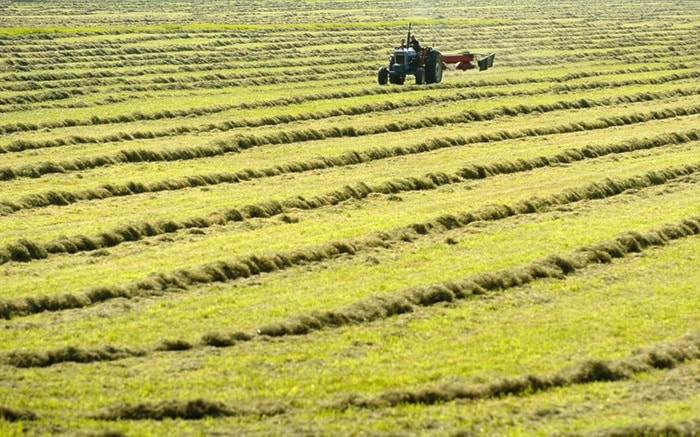Energy and Mines Minister Bill Bennett stirred up a hornet’s nest last summer when he said that the Agricultural Land Reserve boundaries may change.
But the announcement Tuesday on the core review of the land reserve didn’t hint at redrawing lines, apart from an ongoing review in the east Kootenays.
“There are no wholesale changes coming,” said Maple Ridge-Pitt Meadows MLA Doug Bing.
The Agricultural Land Commission will remain independent and keep protecting farmland, he added.
The results of the core review, though, do call for splitting the reserve into two areas: Zone 1 will include the Lower Mainland, Vancouver Island and the Okanagan; Zone 2 applies to ALR throughout the rest of the province.
In the latter, there will be more flexibility for “non-agricultural, home-based businesses.”
Non-farm uses will not be considered in the Island, South Coast and Okanagan regions, but “value added” activities such as food processing on farmland are being considered across the province, Bennett said.
As for Zone 1, which includes Maple Ridge and Pitt Meadows, farmland status will remain the same, with decisions still made under the original principle, to protect farmland, according to a release.
Former NDP agricultural critic Michael Sather is still skeptical.
“It’s hard to say, because there was lots of talk about changes in the northeast to assist energy companies.
But, “It doesn’t sound as bad and maybe it isn’t.”
Delta South independent MLA Vicki Huntington called the Interior zone change “deceitful and a betrayal of the public trust,” and accused the government of removing its obligation to consult with the ALC chair on new panel appointments.
Current NDP agriculture critic Nicolas Simons was forced by the speaker to withdraw the term “deceitful” from his remarks in the legislature, as he accused Bennett of keeping the changes secret until after last year’s election.
“The fundamental principle is that the reserve was set up for the entire province, not for zones here and zones there,” Simons said.
Bennett said the only change to the Interior zones is the addition of “social and economic” factors in considering permitted uses. He gave the example from his Kootenay constituency of a market garden operator who was refused permission to build a second home on an unproductive part of the property so the next generation could take over the business.
However, SFU geography master’s graduate Kelly Baldwin said that allowing other uses on farmland can lead to its fragmentation and loss of use for farming. She added that allowing secondary uses on ALR land may make it easier to remove from the reserve later.
“It is easier to push projects like Site C through, for instance, if you can argue in a political arena that the land within the ALR is not used for farming at the current time.”
Rhonda Driediger, chair of the B.C. Agricultural Council and operator of Driediger Farms in Langley, said she is looking forward to the changes that will allow development of new revenue.
“The ALC is old and it hasn’t been updated in a long time,” Driediger said. “On a day-to-day basis it makes it very difficult in farming, especially when you’re looking to be progressive.”
Faye Street, general manager of Kootenay Livestock Association, congratulated the ministers “for having the three Bs in the male anatomy to get this done – starting at the brain, backbone and work your way down.”
Street said young farmers are not entering the industry under the current conditions, and allowing them supplementary income will help maintain the farmers.
– with files from Black Press .
